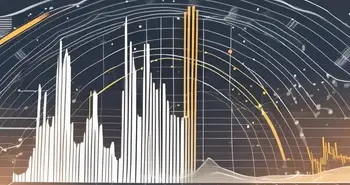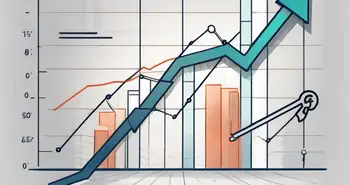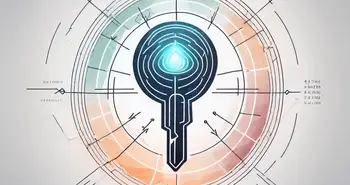Chart Stop Trading: Everything You Need to Know

I have been trading in the financial markets for over a decade, and one technique that has proven to be incredibly effective for me is chart stop trading. In this ultimate guide, I will share everything you need to know about this powerful strategy and how you can use it to enhance your trading success.
Understanding the Basics of Chart Stop Trading
Chart stop trading is a technique that involves setting stop-loss orders based on key chart patterns and technical indicators. This approach allows traders to limit their losses and protect their capital while still participating in the market's potential upside. Let's delve deeper into the concept of chart stop trading.
When it comes to trading, risk management is of utmost importance. Traders need to have a strategy in place to protect their capital and manage potential losses. Chart stop trading provides a systematic approach to achieve these goals.
Defining Chart Stop Trading
Chart stop trading is a risk management technique that involves the use of predetermined price levels, derived from chart patterns, to exit a trade. These price levels act as stop-loss orders, triggering an automatic exit from the trade if the price reaches them, thus limiting potential losses.
Let's say a trader identifies a chart pattern that indicates a potential trend reversal. In order to protect their capital, they can set a stop-loss order slightly below the support level of the pattern. If the price breaks below this level, the stop-loss order will be triggered, and the trader will exit the trade, limiting their potential losses.
By using chart patterns and technical indicators to determine these stop-loss levels, traders can have a more objective approach to risk management. It takes away the emotional aspect of decision-making and allows traders to stick to their predefined trading plan.
The Importance of Chart Stop Trading in the Market
In the fast-paced and sometimes unpredictable world of trading, having a solid risk management strategy is crucial. Chart stop trading provides traders with a systematic approach to protect their capital and manage risk effectively. By setting stop-loss orders based on chart patterns, traders can eliminate the emotional aspect of decision-making and stick to their predefined trading plan.
Moreover, chart stop trading allows traders to participate in the market's potential upside while still having a safety net in place. By limiting their losses, traders can preserve their capital and have the flexibility to explore other trading opportunities.
It's important to note that chart stop trading is not a foolproof strategy. It's just one tool in a trader's arsenal. It should be used in conjunction with other risk management techniques and analysis methods to make informed trading decisions.
Overall, chart stop trading is a valuable technique for traders looking to protect their capital and manage risk effectively. By setting stop-loss orders based on chart patterns and technical indicators, traders can have a more objective approach to risk management and increase their chances of long-term success in the market.
The Mechanics of Chart Stop Trading
Now that you understand the basic concept of chart stop trading, let's explore how it works in practice.
Chart stop trading is a popular strategy used by traders to manage risk and protect their capital. It is based on the identification of key support and resistance levels, trend lines, moving averages, and other technical indicators. These elements play a crucial role in determining the optimal placement of stop-loss orders.
Support and resistance levels are areas on a chart where the price tends to find support as it falls or encounters resistance as it rises. By identifying these levels, traders can anticipate potential price movements and adjust their stop-loss orders accordingly. For example, if a trader is going long, they would set their stop-loss order just below the support level to limit potential losses if the price breaks through that level.
Trend lines are another important element in chart stop trading. They are drawn on a chart to connect the highs or lows of an asset's price movement. When a trend line is broken, it can signal a potential change in the direction of the price. Traders can use trend lines to set their stop-loss orders, ensuring that they exit the trade if the price moves against their anticipated direction.
Fibonacci retracements are a popular tool used in chart stop trading. They are based on the Fibonacci sequence, a mathematical pattern that appears in various natural phenomena. Traders use Fibonacci retracements to identify potential levels of support or resistance where the price may reverse its direction. By setting their stop-loss orders just below a Fibonacci retracement level, traders can protect their capital in case the price breaks through that level.
Moving averages are widely used in chart stop trading as well. They are calculated by averaging the price of an asset over a specific period of time. Traders use moving averages to identify the overall trend of the price and determine potential support or resistance levels. By setting their stop-loss orders just below or above a moving average, traders can ensure that they exit the trade if the price moves against the trend.
By combining these key elements – support and resistance levels, trend lines, Fibonacci retracements, and moving averages – traders can increase the probability of setting effective stop-loss orders and minimizing potential losses. It is important to note that chart stop trading requires careful analysis and monitoring of price movements to adjust stop-loss orders as needed.
In conclusion, chart stop trading is a strategy that allows traders to manage risk and protect their capital. By identifying key support and resistance levels, trend lines, Fibonacci retracements, and moving averages, traders can set their stop-loss orders strategically and exit trades if the price moves against their anticipated direction. This approach helps traders limit losses and increase the probability of successful trades.
Ready to elevate your chart stop trading with a platform that's as innovative as your strategies? Discover Morpher.com, where cutting-edge blockchain technology meets trading without boundaries. With zero fees, infinite liquidity, and the freedom to invest fractionally or short sell across diverse markets, Morpher is the ideal partner for your trading journey. Embrace the safety of a non-custodial wallet, leverage up to 10x, and experience the unique Virtual Futures trading. Sign Up and Get Your Free Sign Up Bonus today to transform the way you trade!

Strategies for Successful Chart Stop Trading
Now that you have a good understanding of the basics and mechanics of chart stop trading, it's time to delve into some strategies that can help you become a successful chart stop trader.
Developing a Chart Stop Trading Plan
One of the most important aspects of chart stop trading is having a well-defined trading plan. This plan should outline your trading goals, risk tolerance, preferred chart patterns and indicators, and most importantly, your stop-loss levels. By having a clear plan in place, you can avoid impulsive trading decisions and stick to a disciplined approach, which is crucial for long-term success.
Risk Management in Chart Stop Trading
Effective risk management is at the core of successful chart stop trading. It's essential to determine your risk tolerance and allocate your capital accordingly. It's recommended to risk no more than 1-2% of your trading capital on any single trade, and to adjust your position sizes based on the distance between the entry point and the stop-loss level. This ensures that you can withstand market fluctuations and protect your trading capital over the long term.
Advanced Techniques in Chart Stop Trading
For experienced traders looking to take their chart stop trading to the next level, there are advanced techniques that can be employed to maximize profitability.
Leveraging Chart Patterns for Stop Trading
Chart patterns such as triangles, double tops and bottoms, and head and shoulders formations can provide valuable insights into future price movements. By combining these patterns with stop-loss orders based on key support and resistance levels, traders can enhance their chart stop trading strategy and increase the probability of successful trades.
The Role of Technical Analysis in Chart Stop Trading
Technical analysis is a crucial tool in chart stop trading. By carefully analyzing price charts, trends, and indicators, traders can identify potential trading opportunities and set stop-loss orders based on these technical signals. Technical analysis, when combined with proper risk management, can significantly improve trading performance and profitability.
Common Mistakes in Chart Stop Trading and How to Avoid Them
Even with a solid understanding of chart stop trading, mistakes can still occur. Let's explore some common pitfalls and how to avoid them.
Overtrading and How to Prevent It
One of the most common mistakes traders make is overtrading. This occurs when traders take excessive trades outside of their predefined trading plan. Overtrading can lead to increased transaction costs and emotional decision-making, ultimately impacting profitability. To prevent overtrading, it's important to stick to your trading plan and only take trades that meet your predefined criteria.
Avoiding Emotional Trading Decisions
Trading decisions based on emotions rather than logic can quickly derail your chart stop trading strategy. Fear and greed are two powerful emotions that can cloud judgment and lead to impulsive decisions. To avoid emotional trading, it's crucial to stick to your trading plan, practice discipline, and trust the chart patterns and indicators that have been proven to work over time.
FAQ
- What is chart stop trading?
- Why is chart stop trading important in the market?
- How does chart stop trading work?
- What are the key elements in chart stop trading?
- What strategies can I use for successful chart stop trading?
- Are there advanced techniques in chart stop trading?
- What are common mistakes to avoid in chart stop trading?
I'm thrilled to share my knowledge and expertise about chart stop trading with you. By implementing the strategies and techniques outlined in this guide, you'll be well on your way to becoming a successful chart stop trader. Remember, practice and patience are key, and always stick to your trading plan. Happy trading!
Disclaimer: All investments involve risk, and the past performance of a security, industry, sector, market, financial product, trading strategy, or individual’s trading does not guarantee future results or returns. Investors are fully responsible for any investment decisions they make. Such decisions should be based solely on an evaluation of their financial circumstances, investment objectives, risk tolerance, and liquidity needs. This post does not constitute investment advice.

Painless trading for everyone
Hundreds of markets all in one place - Apple, Bitcoin, Gold, Watches, NFTs, Sneakers and so much more.

Painless trading for everyone
Hundreds of markets all in one place - Apple, Bitcoin, Gold, Watches, NFTs, Sneakers and so much more.








